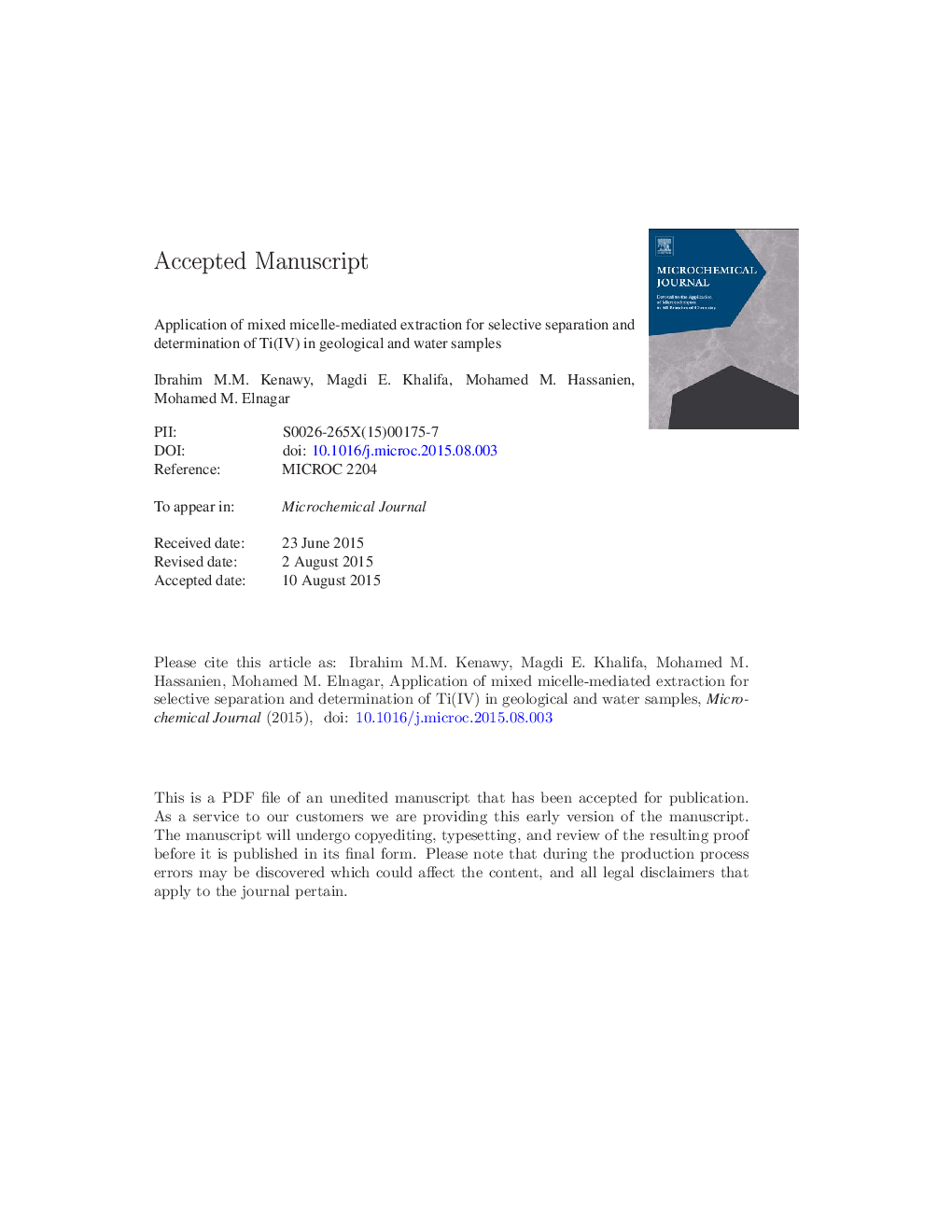| Article ID | Journal | Published Year | Pages | File Type |
|---|---|---|---|---|
| 7642038 | Microchemical Journal | 2016 | 41 Pages |
Abstract
A simple cloud point extraction (CPE) methodology based on the complexation of Ti(IV) with Alizarin Red S (ARS) and cetyltrimethylammonium bromide (CTAB) at pH 3 followed by extraction with Triton X-114 in the presence of Na2SO4 at room temperature (25 °C) has been developed. The enriched analyte in the surfactant-rich phase was determined by visible spectrophotometry or inductively coupled plasma optical emission spectrometry (ICP-OES). The main factors affecting mixed micelle-mediated extraction efficiency were studied. At optimum conditions, the linear range of 0.3-80 and 7-200 μg Lâ 1 with a detection limit of 0.1 and 2.3 μg Lâ 1 was obtained for separation and determination of Ti(IV) with 50 mL solution using ICP-OES and visible spectrophotometry, respectively. A pre-concentration factor of 100 was achieved for both techniques. The effect of diverse cations and anions on the extraction efficiency was tested. At optimum pH, the separation is proved to be highly selective for Ti(IV), since the extraction of many lanthanide and transition metal alizarinate complexes using Triton X-114 occurs at different pH ranges. The interference of 2000 fold excess of Fe3 + is tolerated using ascorbic acid as a masking agent. Also, NaH2PO4 is used to eliminate the interference caused by UO22 +, Zr4 +, Hf4 + and Al3 +. The accuracy of the procedure was evaluated through recovery experiments on synthetic mixtures. The proposed procedure has been successfully applied for separation and determination of Ti(IV) in geological samples, simulated reference materials and water samples with satisfactory results.
Related Topics
Physical Sciences and Engineering
Chemistry
Analytical Chemistry
Authors
Ibrahim M.M. Kenawy, Magdi E. Khalifa, Mohamed M. Hassanien, Mohamed M. Elnagar,
